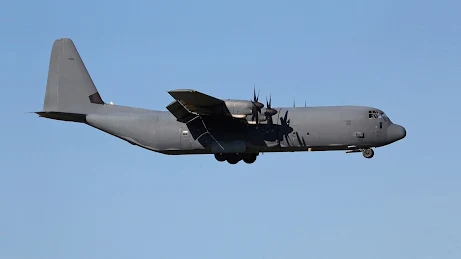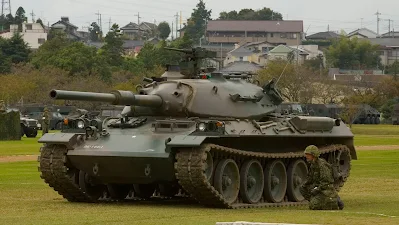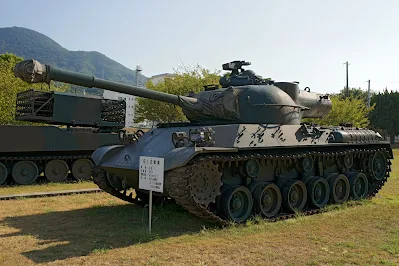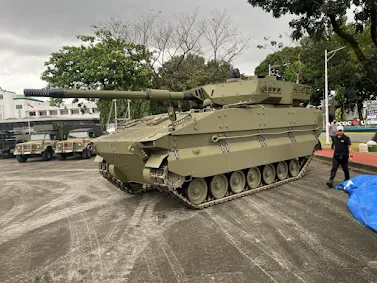The Philippine Air Force aims to increase its fleet of cargo aircraft, which comes just as essential as its primary combat aircraft, like the upcoming Multirole Fighter Jets under the acquisition project of the same name and other ones in the Horizon 3 lineup of the air service branch.
This article presents some interesting updates about this specific acquisition project that deals with this type of cargo aircraft known and iconic for the Philippine Air Force, plus some startling information worth sharing for this community.
AS REPORTED
At the time this article published, several news outlets already provided the highlighted reports regarding the acquisition of brand new C-130J-30 Super Hercules Cargo Aircraft for the Philippine Air Force, pertaining to the procurement of at least three (3) units of this cargo aircraft aimed in complementing the older C-130H and C-130T variants that served as the primary airlifting workhorse of the air service branch.
In the news provided in-detail, it referred to the statement of the Department of National Defense regarding its release of a Notice to Proceed or NTP, a piece of document in accordance to the Procurement Law or R.A. 9184 that served as a go-signal for the winning bidder to materialize the production of goods needed as stipulated and required by the Philippine Air Force, with detailed specifications fully specified in an agreed contract between two parties involved.
As intended, the acquisition of these cargo aircraft from Lockheed Martin aims to achieve two things, first regarding the Humanitarian Assist and Disaster Relief or HADR operations of the air service branch of the Armed Forces of the Philippines, as this focuses much on getting the relief goods in disaster-prone areas as quickly as possible. And second, regarding its use for delivery of goods and military equipment, along with the deployment of needed military personnel in areas of concerned as part of the Armed Forces' logistics chain.
With this acquisition project, the Philippine Air Force experienced a leap in its overall airlift capabilities, as this also means reducing the operational hours of its existing C-130 aircraft, allowing these cargo platforms to undergo necessary maintenance schedules without disruptions in airlift operations, while getting an expanded capability in airlift as the C-130J-30 aircraft comes with an expanded fuselage compared to the ones currently servicing the air service branch.
As other news reports already provided the primary developments regarding the updates of the C-130J-30 Super Hercules cargo aircraft that the Philippine Air Force is likely to receive by 2026 and 2027, respectively, this article will focus more on other information not available from the news outlets and resource websites, as these are the details that got shared to the Pitz Defense Analysis website from our reliable sources.
THE DETAILS
 |
| The letterhead of the Notice to Proceed document. |
Here are several details regarding the developments of the C-130J-30 Super Hercules cargo aircraft of the Philippine Air Force, especially the two essential events that define the preferable outcome for the overall direction of this acquisition project as pushed by the Department of National Defense into the bidding stage. One of those events is the issuance of the Notice of Proceed document of the winning bidder.
Speaking of Notice to Proceed, contrary to the reports that the document has issued recently, have actually released to the representative of Lockheed Martin on June 5, 2023 or four (4) months since the recent media releases and the publishing of this article. This means that the process in producing the three (3) C-130J-30 cargo aircraft has already started, with queues ramping up in the production line that gives the reason regarding the 2026 and 2027 delivery dates.
Going further, the contract signing for this acquisition project actually took place on February 9, 2023, or another four (4) months ramping up to the Defense Department's issuance of the Notice to Proceed documents before the Lockheed Martin representative, which makes it at least eight (8) months from the signing of the contract up to the time this article has published. This further connects the timeline that the movements for the acquisition of the C-130J-30 Cargo aircraft take place within the year 2023 alone.
As described in the documents, the contract price for the delivery of the C-130J-30 cargo aircraft for the Philippine Air Force amounts to Php 22,199,999,983.47 or US$390,913,893.00, which means every aircraft in this contract costs at around Php 7,399,999,994.49, or Php 130,304,631. Also to point out that contrary to several reports, both the contract and the notice to proceed have actually signed and took place during the time of the Defense Officer-In-Charge Carlito Galvez.
Completing it up, the Notice to Proceed has received by the representative on June 7, 2023, and since then it formalizes the start of the production and eventual delivery of the C-130J-30 Super Hercules cargo aircraft that may substantially improve the airlifting capabilities of the Philippine Air Force upon the successful delivery of the units three (3) to four (4) years down the road.
THE PLANNED 'PHASES'
.jpg) |
C-130 Production Line.
(c) Lockheed Martin, Flickr. |
Aside from the information provided regarding the issuance of the Notice of Proceed documents along with other details about the dates of contract signing and the go-signal that starts the process for Lockheed Martin to produce and eventually delivering the C-130J-30s for the Philippine Air Force, here are some interesting information about the number of units purchased and the prospective plans in the long run.
Initially, the Philippine Air Force opts to get at least five (5) C-130J-30 Cargo aircraft as originally planned, until these gets reduced to three (3) units which is now the official number of aircraft purchased under this acquisition project that the air service branch is surely getting and is now in its current production phase in a Lockheed Martin facility that produces those C-130 aircraft (see image above).
These three (3) units of C-130J-30 Super Hercules aircraft purchased by the Philippine Air Force for this acquisition project have simply counted as the first phase of the entire process, as the original aim of getting at least five (5) units of C-130J-30s have not entirely abandoned by the leadership, but having it divided into manageable phases with the remaining units belonging to the second phase of this entire acquisition planning.
Hence, there is still a standing chance that the original plans of getting at least five (5) C-130J-30s comes into fruition, although the implementation and decision of whether pushing the second phase of this planning is still with the leadership within the Armed Forces of the Philippines and the Department of National Defense. Still, adding at least three (3) C-130J-30s into the current fleet of C-130 aircraft of the Philippine Air Force presents a leap of its own.
OTHER C-130-RELATED PURCHASES
 |
The difference between C-130H and C-130J-30 is in terms of performance.
(c) Lockheed Martin |
Another thing to point out is there are other acquisition projects that the Philippine Air Force expects to receive coming out from the United States, primarily regarding the used ones under the arrangements between the both governments during the visit of the entourage of President Ferdinand Marcos Jr. in Washington D.C. to meet his U.S. counterpart Joe Biden.
The ones referred to are the moves of the United States government in transferring at least three (3) C-130H cargo aircraft to the Philippine Air Force, of which they present their intention to make that undertaking, aside from the plans of transferring several of the United States Coast Guard's Island-class and Marine Protector-class patrol vessels.
These latter two patrol vessels have the Philippine Navy as its primary recipient, with the details provided in a separate article entry we have through this link here.
This means that if the goods under this arrangement push through, the Philippine Air Force will receive at least six C-130s altogether, giving a huge leap to its airlifting capabilities over the existing ones currently serving the air service branch. This leap means lesser operational time for those existing ones, which also means reduced flight hours and continuous airframe stress that will wear its remaining serviceable life further, while having time for maintenance and repairs without disruption.
Going further, if we add the additional two (2) C-130J-30s under the original acquisition plan on top of the three (3) C-130J-30s currently in production and the C-130H pledged by the United States during the Philippine president's visit to the United States, this means that the Philippine Air Force may ending up having at least eight (8) newly added C-130s, ensuring a huge boost in capabilities that the organization needs not only to deploy troops and equipment but also in delivering relief goods in an event of calamities.
So far, there are no updates regarding the development of this pledges coming from the United States, and since the Department of National Defense is gearing itself to external defense, it may likely get a request on additional fighter aircraft like the F-16 Multirole Fighter Jets, of which this presented as an option through Excess Defense Articles or EDA, as part of security arrangements that include additional sites under the Excess Defense Cooperation Agreement or EDCA.
WRAPPING IT UP
 |
A C-130J-30 of the British Royal Air Force pictured in a sunrise during an exercise in Jordan.
Image Source. |
With the official news about the C-130J-30 Acquisition Project of the Philippine Air Force coming out, we presented several insights and additional information that came from the sources that we have, with an idea and complete context of the developments from earlier this year when the contract gets signed on February 9, 2023, up to the release of the Notice to Proceed documents on June 5, 2023.
The delivery dates presented come reminiscent of the other acquisition projects of the Revised AFP Modernization Program, whereby the ones like the
Long-Range Patrol Aircraft Acquisition Project of the Philippine Air Force have its delivery date completion slated on 2026, while others like the Philippine Navy’s
Corvette Acquisition Project (HDC-3100 design) also have its delivery date slated in 2026.
Also, to recap a bit, the Philippine Air Force originally intends to get at least five (5) C-130J-30 Super Hercules cargo aircraft in its planning, although this seems like it reduced to three (3) units, with the info we gathered suggesting that the numbers have remained and the latter two (2) units are in the second phase of this acquisition planning process that may change given the Department of National Defense’ current shift into external defense posture.
The development comes on top of the pledges that the United States made earlier this year, of which it includes at least
three (3) C-130H cargo aircraft whereby it also comes as a significant boost to the existing number of C-130s currently servicing the Philippine Air Force. Adding it together will give the air service branch
a big leap in its airlifting capabilities, a much-needed capability for the country’s archipelagic geography with its vulnerability to natural calamities ranging from earthquakes to typhoons.
Overall, this development presented itself as good news among the first salvo of upcoming Horizon 3 lineup and acquisition plans that may take place in the next couple of months, as the entire Armed Forces of the Philippines upped its ante in terms of the need of additional budget to get the number it gets, while making sure that the country’s minimum credible defense posture that the entire organization is seeking is worthy with its capabilities that correspond to every cent of taxpayer’s money being spent.


.jpg)





















.png)



